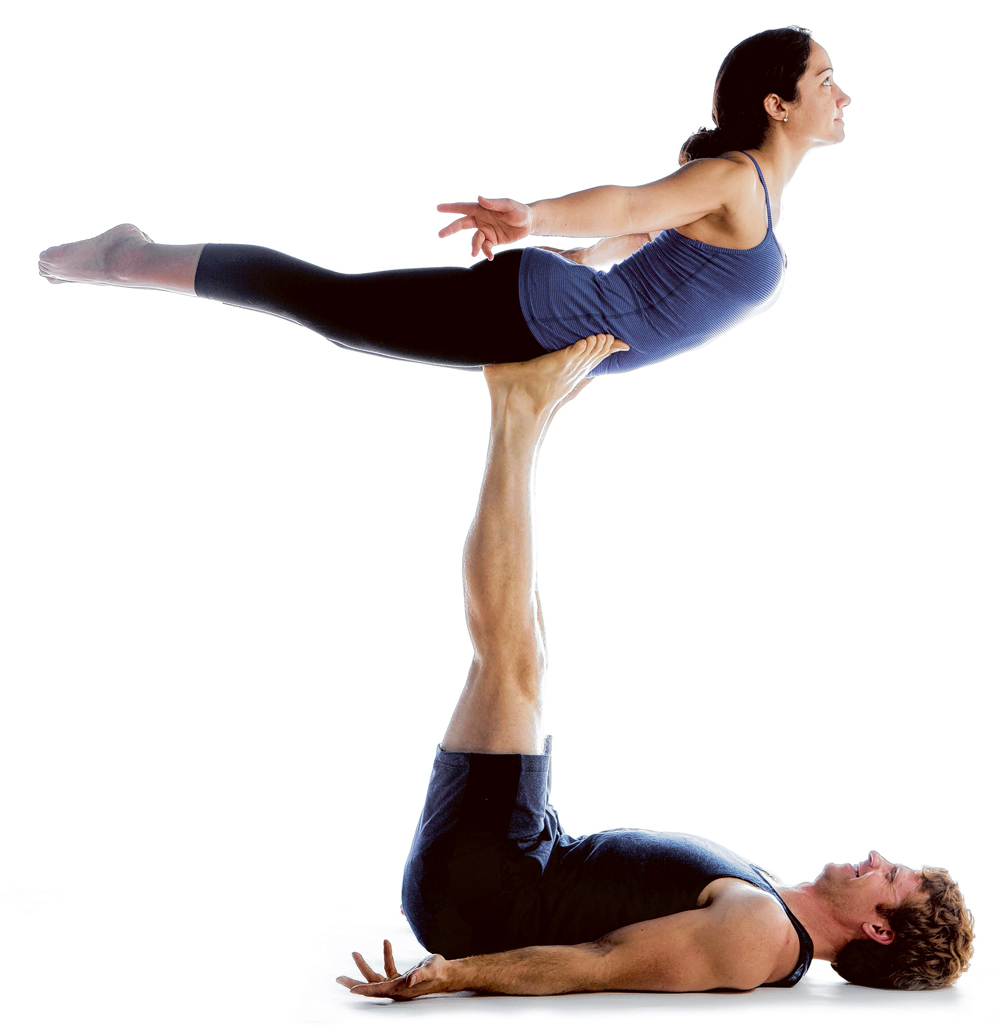According to certified yoga instructor Matt Fields-Johnson, the most important thing to bring to your first acro-yoga class is a sense of humor. "You're going to fall. A lot," he says. The second most important thing to bring is a basic level of fitness. "If you don't have the flexibility to touch your toes," says Fields-Johnson, "that's problematic."
Acro-yoga is the blend between acrobatics, yoga and performance art. It requires two people: a base and a flier. The base partner stays connected to the ground while lying down, sitting or standing. The flier, supported by the base, is elevated in the air while moving his or her body into a series of shapes, or yoga poses. The result resembles something like a living sculpture.
"Only it's more unique because this sculpture is only temporary and it's moving around," says Fields-Johnson. The artistic allure of acro-yoga is certainly one facet of its appeal. But in fact the sport, first termed acro-yoga in 2001, offers a variety of both physical and emotional benefits to its participants.
Solar Side
The solar side of acro-yoga entails more acrobatics and athleticism. "The physical benefit is that it gets you really strong," says Fields-Johnson. Both the base and the flier benefit from increased endurance strength as well as toning. The flier has the added advantage of growing core strength and flexibility.
Lunar Side
The lunar side of acro-yoga involves deep stretches and relaxation. Fields-Johnson likens it to couples therapy. "Acro-yoga is all about trust," he says. It can also be extremely beneficial in teaching effective communication. "It forces the partnership to really hone in on their communication so that each person is getting what they need and feels supported the way that they need," he explains.
 Joy Dixon holds a strong wheel to support Matt Fields-Johnson in crow pose. Some Acro-yoga partner balances combine traditional yoga postures. This pose would be called crow on wheel and it is physically demanding for both parties to perform because it requires strength and flexibility for the base and strength and balance for the flyer.
Joy Dixon holds a strong wheel to support Matt Fields-Johnson in crow pose. Some Acro-yoga partner balances combine traditional yoga postures. This pose would be called crow on wheel and it is physically demanding for both parties to perform because it requires strength and flexibility for the base and strength and balance for the flyer.Of course, you do not have to be in a romantic relationship with a person to practice acro-yoga. Nor do you have to be a super athlete. "Just like there is a yoga for everyone, there is a style of acro-yoga for everyone. The average person can find a lot of poses accessible."
However, Fields-Johnson reminds us, "Part of the fun is the risk. It can be dangerous. Getting some instruction from someone who knows what they're doing is really important."
To find out more about your acro-yoga community visit facebook.com/chattacro to or view stunning videos of acro-yoga visit acropedia.org.

